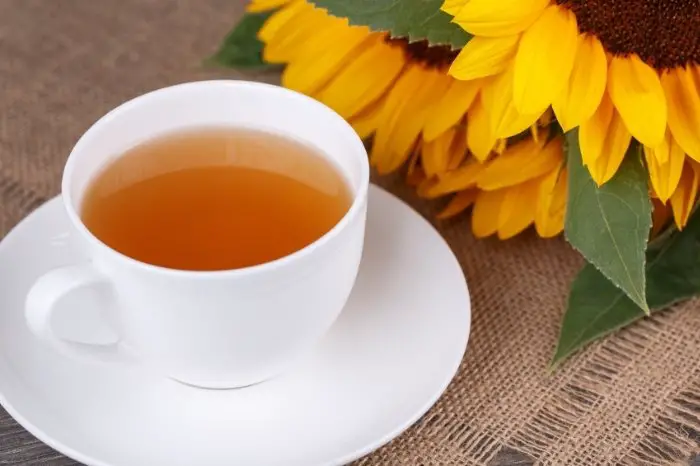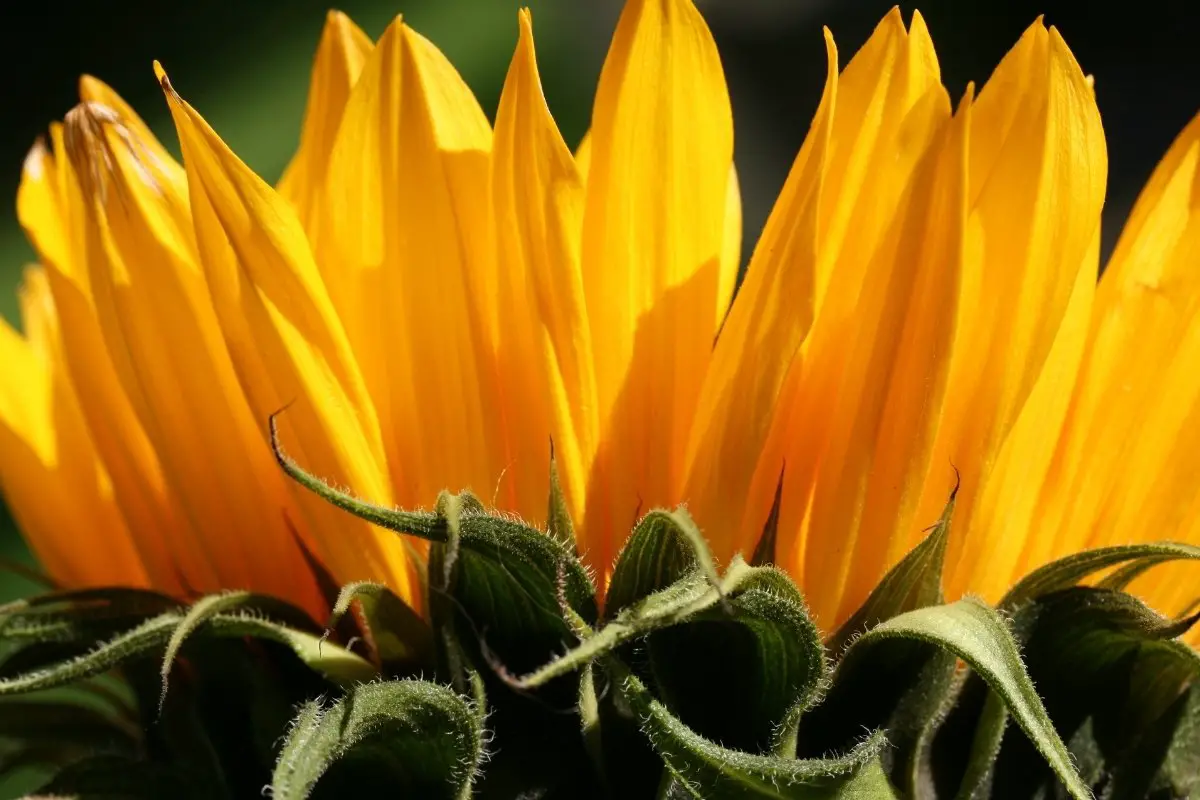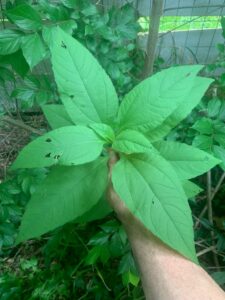Last Updated on February 1, 2023 by Tony Manhart
Are sunflower leaves edible? Are sunflower roots edible? When you think of a sunflower, you probably think of the actual flower. However, this plant has several other edible components, that have great health benefits. And one will give you the most intense gas you have ever experienced! Read on to find out more – and I did warn you about the wind.
What Are Sunflowers?
Typically when we think sunflower, we think about the common sunflower – Helianthus annus. Now just before we get ahead of ourselves and laugh at the name, Heli (Sun) Anthus (flower) Annuus (annual). Within the Helianthus genus, many species have similar-looking big round cheerful sunlike flowers. We all know the common sunflower look. Some sunflower species are perennial – they lurk undergrown in winter and emerge in spring – a good example being the Jerusalem artichoke – Helianthus tuberosus. This beautiful plant is grown for its roots – although I grow it for its flowers too.
There are about 70 species in the Helianthus genus – all of which have beautiful flowers. If you live in an area where there are indigenous, wild sunflowers, why not grow these instead of commercial strains? You will derive beauty from conserving a species!!
Sunflower leaves
Sunflower leaves are simple and have a heart-shaped to oblong shape with a size from a few inches up to 12 inches in really healthy plants. The leaves are covered in hairs which are actually Trichomes. Trichomes help the plant retain moisture, protect against herbivores, and keep a layer of phytomedicinal compounds in the air around the plant. Remember this trichome presence – we will go into why this is important to your health shortly.
The size of the leaves depends on the growth of the plant. Certain leaf-cutter bees may make holes in the leaves – these are the same bees that pollinate the sunflower. A beautiful cycle. These solitary bees feed on the nectar of the flower. They also help pollinate the sunflower plant flowers. The leaves of the sunflower plant can be used in herbal medicines. They can be used in making soap, detergents, and cosmetics.
Dried, Organic Sunflower Sprinkles from Germany | Net Weight: 0.52oz / 15g
Are Sunflower Leaves Eaten?
Yes – the leaves can be used both as a cooked leafy green and also as a source of medicines to treat various ailments. Let’s unpack this – it is important to know how to prepare the sunflower leaves for different purposes.
Understanding Sunflower Leaf Hairs – and how to eat them
Sunflower leaves unprepared are not going to be pleasant to eat mainly due to the Trichomes, or leaf hairs that cover both sides of the leaf. These make the leaf look furry, and make the actual leaf unsuitable for use in for example a salad. This is why we have to cook sunflower leaves. The cooking process softens the leaves and also drives out some of the volatile compounds that trichomes produce. If this cooking process were to be in to form of making tea, the compounds that are driven out by heat will end up in the water, and this makes medicinal tea.
If we were to want actually eat the leaves, then we need to do something that makes it possible for us to get rid of the furriness and some of the “medicinal” flavors. Let’s have a look at a few of these methods, and how to use the products.
Dried Sunflower Leaves
When you dry sunflower leaves, you can make them into a powder that is similar to moringa powder. This paper shows that dried Jerusalem Artichoke leaves (Sunflower family) have a protein content of 33% – to put this in perspective, moringa leaf powder comes in at 24% and a good steak at about 25%. I have used dried Jerusalem artichoke and Sunflower leaves in the past – I just crush them up, put them in my blender to make a powder, and then keep this in a bottle and add a few tablespoons to soups and stews. It just blends into the background and provides some thickening to the dish.
Sunflower Leaf Tea
I have used the Jerusalem Artichoke leaves to make tea in the past when I had a partner who got bad period pains. This together with a few other herbs and spices appeared to reduce these cramps. There is a certain amount of science backing this, with many phytomedicinal compounds in the leaves that could plausibly help. There are claims that the tea can help with Malaria, but I see no explanation of how, so I assume this is a meme of sorts. The main thing with the tea – whether you make it from fresh leaves, or dried leaves is that it contains several water-soluble beneficial phytochemicals. Add a bit of honey, and lemongrass if you have it, to make this taste better. It does not taste wonderful on its own.
Are Sunflower Leaves Edible – Yes
When sunflower leaves get mature they can get quite leathery and the veins get big. I do not enjoy the taste or texture of these leaves, much like mature kale is also a lot of work to eat. Pick young fleshy leaves.
Here is a picture of one of my young Jerusalem artichoke sunflower plants. I pick the leaves just below the growth shoot.
To cook these you can just cut them up much like you would do for kale, and fry them. I find frying them in odorless coconut oil works the best. They are very nicely incorporated into a multi-leaf omelet. If you wish you can add them to soup and any other recipe where you would use random greens. They blend into the background in a stew and seem to help to thicken soups if you boil them for a long time.
Are Sunflower Petals Edible
Yes – they are a rich source of beta-carotene. I often put sunflower (from my Jerusalem Artichokes) in salads. The petals are relatively bland in taste, but they make a salad look amazing. There are health benefits associated with the flavonols which are used by the petals to send signals to pollinators and it appears that this specific group of chemicals has several health benefits. This paper shows how these chemicals are antioxidants with potential health benefits.
An amazing irony is that you can make tea with sunflower petals, which have the function of signaling to pollinators, and if you can find sunflower honey, you will be sweetening this tea with proof that the signaling worked!
Can Dogs Eat Sunflowers
Dogs will often destroy sunflowers. My parents have had Rotweillers since the mid 80’s so my entire childhood and adult life I have watched these large dogs occasionally wreck their garden. Rottweillers love to rip a sunflower out of the ground, eat the leaves, shred the head and then turn the stem into a toy. 7 rottweilers later and no deaths from sunflowers. This is backed up by various groups in the US who insist sunflowers pose no health threat to your dog (or cat).
Are Sunflower Roots Edible – Introducing the Fartichoke
The common sunflower has roots that, if you wish to eat are edible, but you need to be pretty desperate as there is not much there. The Jerusalem Artichoke – which is a type of sunflower that has underground tubers – is a far better source of roots to eat.
These tubers are relatively unusual in that they store their sugars as inulin – this is a polymer of fructose, whereas starch is a polymer of glucose. Inulin is very difficult for us to digest, but it really helps certain bacteria in our stomachs that are good for us – so-called probiotics.
If you eat these artichokes for a week, you will have explosive gas for the first two days. Trust me. This is like nothing you have ever experienced before – picture a rocket launch. After the third day of eating them, your stomach will calm down, and you will find your mind becomes very clear as the artichokes encourage really good bacteria to grow in your stomach. When this happens your mind will become active and your gas production inactive. This is a good thing. It may even help you avoid cancer.

In Conclusion, Are Sunflower Leaves Eaten?
Well, now we know that not only are sunflower leaves edible, but they are also delicious and healthy. Whether you use them as fresh green leaves in your cooking, or as a dry powder, they are high in protein, trace elements, and certain phytomedicinal compounds.
The roots of the Jerusalem artichoke – which is a type of sunflower – are rich in inulin, which really helps your probiotic gut microbes – although initially, you may regret it due to the wind thing – after that subsides, you will be healthier than before.
Sunflower teas, made from leaves, petals, or both contain phytomedicinal compounds that help your body with the tool kit of things it needs to maintain you. The fluffy things on the leaves – trichomes – are softened by cooking in young leaves, and in old leaves not as much. Harvest young juicy leaves and leave the older leaves to do what they do best – nourish your plant.
FAQ’s
Are sunflower leaves good for you?
The leaves of sunflowers are nutritious and can be used to make delicious and nutritious vegetables, rich in vitamins, minerals, fibre and protein. Sunflower oil made from the leaves and seeds is high in vitamin E, and omega-6 fatty acids, and has been proven to lower cholesterol. It is also high in calcium, iron, potassium, magnesium, and zinc.
Is it safe to eat sunflower petals?
Yes, the petals can be eaten and are particularly popular in salads and can be added to stir-fries. Sunflower seeds are one of the most nutritious foods available and contain more protein than other seeds. They also have high levels of antioxidants, which help protect against heart disease, diabetes, and cancer.
What parts of sunflower are edible?
Sunflower leaves, stems, roots, seeds and oil are all edible. The seeds are a nutritious food that can be used in porridge or as a healthy snack. They also have high levels of protein and fibre, as well as a range of vitamins and minerals.
Are sunflower leaves poisonous?
Sunflower leaves are not poisonous. No part of the sunflower plant is poisonous at all. The plant is friendly to its users.
Dr. Garth A. Cambray is a Canadian/South African entrepreneur and beekeeper with 28 years of experience in apiculture and specializes in adding value to honey. His Ph.D. research developed a new advanced continuous fermentation method for making mead that has resulted in a number of companies globally being able to access markets for mead. His company, Makana Meadery, exports honey mead to the USA where it is available to discerning connoisseurs. He has also developed technologies to commercially manufacture organic honey vinegar in Zambia for export globally. He holds a few patents globally in the ethanol industry and believes in technology and knowledge transfer for human development and environmental sustainability. One of his proudest achievements is the fact that the wind farm he started at one of his old apiary sites has essentially made his hometown carbon neutral.




